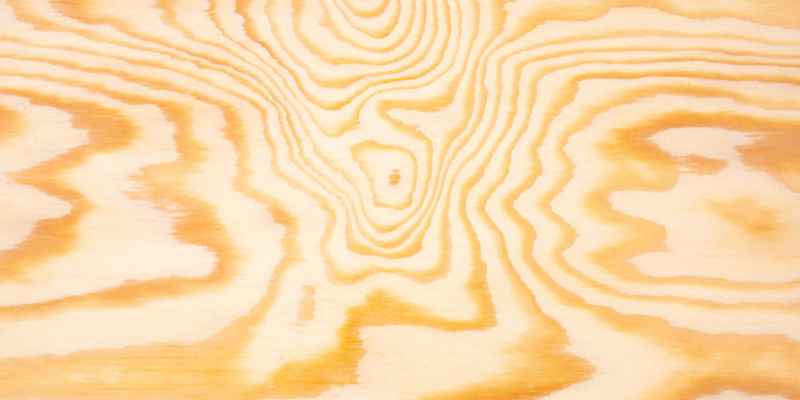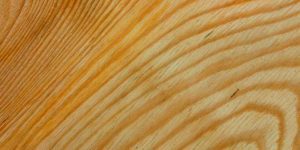Zebra wood is not toxic. It is safe to use for woodworking projects and furniture making.
Zebra wood, also known as Zebrano, is a hardwood species native to West Africa. It is known for its distinctive striped appearance, which makes it a popular choice for decorative purposes. Many people wonder if this unique wood is toxic or harmful to humans.
The good news is that zebra wood is not toxic. It is safe to use for woodworking projects and furniture making. However, as with all woodworking projects, it is important to take proper safety precautions, such as wearing protective gear and using proper ventilation, to avoid any potential hazards. Overall, zebra wood is a beautiful and safe choice for woodworking projects.
Introduction To Zebra Wood
Zebra Wood, known for its striking appearance, isn’t toxic. This hardwood is safe for use in furniture and decorative items.
Zebra wood, also known as Zebrano, is a type of exotic hardwood that is native to several countries in Africa. This distinctively striped wood is famous for its unique appearance, which resembles the stripes of a zebra. It is a highly sought-after material in the woodworking industry due to its durability, strength, and aesthetic appeal. In this blog post, we will explore the origins and characteristics of zebra wood and its common uses in woodworking.
Origins And Characteristics
Zebra wood comes from several species of trees that are part of the Microberlinia family. These trees are typically found in the tropical regions of West Africa, including Cameroon, Gabon, and the Congo. The wood’s distinctively striped pattern is caused by the presence of alternating layers of dark and light-colored wood.
Zebra wood is a dense and heavy hardwood, with an average weight of 800 kg/m3. It has a fine texture and medium to coarse grain, which makes it an excellent material for woodworking projects. The wood is also highly durable, resistant to decay, and has excellent resistance to termites and other wood-boring insects.
Common Uses In Woodworking
Zebra wood is a popular material in the woodworking industry, due to its unique appearance and durability. It is commonly used for a wide range of projects, including furniture, flooring, and decorative items.
Here are some of the most common uses of zebra wood in woodworking:
- Flooring
- Cabinets and furniture
- Inlays and decorative accents
- Bowls, vases, and other turned items
- Musical instruments such as guitars, drums, and ukuleles
Overall, zebra wood is a beautiful and durable material that is ideal for a wide range of woodworking projects. Its unique appearance and excellent strength make it a highly sought-after wood in the industry.
Myths And Facts About Wood Toxicity
Common Misconceptions
Zebra wood is often wrongly believed to be toxic.
However, this is a common myth that needs clarification.
What Science Says
Scientifically, zebra wood is generally safe to handle.
There is limited evidence to suggest toxicity in zeb
Zebra Wood Specifics
Zebra wood, though not toxic, can cause skin and respiratory irritation due to its dust. It is advisable to wear protective gear when working with zebra wood to minimize potential health risks. Proper ventilation and dust control are essential for safe handling.
Botanical Profile
Zebra Wood, scientifically known as Microberlinia brazzavillensis, is an exotic hardwood species native to the tropical regions of West Africa, particularly found in countries like Cameroon, Gabon, and Congo. It is renowned for its distinct appearance, characterized by its striking black and brown stripes that resemble a zebra’s pattern, hence the name. This unique pattern makes Zebra Wood a popular choice for various woodworking projects, including furniture, flooring, and decorative items.
Toxicity Concerns
When it comes to concerns about the toxicity of Zebra Wood, it’s important to note that this hardwood is generally considered safe to handle and work with. However, as with any wood, certain precautions should be taken to ensure a safe working environment.
Zebra Wood contains a natural substance called lapachol, which is a quinone compound found in many tropical woods. This compound can cause skin and respiratory irritation for some individuals. It is advisable to wear protective gloves, a mask, and work in a well-ventilated area when sanding, cutting, or otherwise working with Zebra Wood to minimize the risk of irritation.
Moreover, it is crucial to avoid inhaling the sawdust or getting it in contact with your eyes. Proper dust collection and wearing safety goggles are essential safety measures to prevent any potential issues.
Despite these precautions, it’s important to note that the toxicity concerns associated with Zebra Wood are relatively minimal compared to other woods known for their potential health risks.
| Toxicity Level | Skin Irritation | Respiratory Irritation |
|---|---|---|
| Low | Yes | Yes |
Overall, while Zebra Wood does possess some toxicity concerns, taking appropriate safety measures and following best practices during woodworking can minimize any potential risks. By ensuring proper ventilation, wearing protective gear, and practicing good dust collection habits, you can safely enjoy working with this beautiful and unique hardwood.
Health Implications Of Working With Zebra Wood
Zebra wood is a popular choice for woodworking due to its beautiful grain patterns and natural durability. However, it’s important to be aware of the potential health implications when working with this exotic wood.
Skin Contact Risks
Zebra wood contains natural oils and can cause skin irritation when handled without proper protection. It’s important to wear gloves and long sleeves when working with zebra wood to minimize the risk of skin contact. If skin irritation occurs, wash the affected area with soap and water immediately.
Respiratory Effects
When zebra wood is cut or sanded, it can release fine dust particles that may be harmful if inhaled. Exposure to these particles can cause respiratory irritation and may worsen existing respiratory conditions. It’s crucial to wear a dust mask or respirator to protect the lungs from inhaling the wood dust.
Safety Measures For Woodworkers

When working with different types of wood, it is crucial for woodworkers to prioritize their safety. This includes understanding the potential toxicity of certain woods, such as Zebra Wood, and taking the necessary precautions to protect themselves. In this article, we will discuss the safety measures that woodworkers should follow when working with Zebra Wood.
Personal Protective Equipment
Wearing the appropriate Personal Protective Equipment (PPE) is essential to minimize the risks associated with working with Zebra Wood. Here are some PPE items that woodworkers should consider:
- Safety Glasses: Protect your eyes from wood dust, splinters, and other potential hazards.
- Dust Mask or Respirator: Prevent inhalation of fine wood particles and dust, especially when cutting or sanding Zebra Wood.
- Gloves: Shield your hands from splinters and potential skin irritation caused by direct contact with the wood.
- Hearing Protection: Use earplugs or earmuffs to safeguard your hearing from loud machinery or tools used during the woodworking process.
- Protective Clothing: Wear long sleeves, long pants, and closed-toe shoes to minimize skin exposure to wood dust and potential injuries.
Proper Ventilation Practices
Adequate ventilation is crucial in preventing the accumulation of wood dust and fumes, which can be harmful when working with Zebra Wood. Here are some ventilation practices that woodworkers should follow:
- Use Exhaust Fans or Ventilation Systems: Install exhaust fans or ventilation systems in your workspace to ensure proper air circulation and reduce the concentration of airborne particles.
- Work in a Well-Ventilated Area: If possible, work outdoors or in a well-ventilated area to minimize exposure to wood dust and fumes.
- Regularly Clean and Vacuum: Clean your workspace regularly to remove accumulated wood dust and debris. Use a vacuum with a HEPA filter to effectively capture fine particles.
By following these safety measures, woodworkers can ensure their well-being while working with Zebra Wood. Remember, prioritizing safety is key to enjoying woodworking as a fulfilling and safe hobby or profession.
Regulations And Standards
Zebra wood is not known to be toxic, but it is important to consider the regulations and standards in place to ensure its safe use. Industry guidelines and governmental health standards play a crucial role in determining the safety of zebra wood in various applications.
Industry Guidelines
The woodworking industry has established guidelines for the safe handling and use of zebra wood. These guidelines cover proper ventilation, personal protective equipment, and safe disposal methods for zebra wood waste. Woodworkers and manufacturers must adhere to these guidelines to minimize health risks associated with zebra wood.
Governmental Health Standards
Governmental health agencies set standards to protect the public from potential health hazards related to wood products, including zebra wood. These standards outline acceptable levels of emissions and exposure limits for workers and consumers. Adhering to these standards is essential for ensuring the safety of zebra wood products in the marketplace.
Handling And Disposal
Zebra wood is not known to be toxic, but caution should still be exercised when handling and disposing of it. When working with zebra wood, it’s important to wear protective gear and work in a well-ventilated area to avoid any potential respiratory irritation.
Additionally, proper disposal methods should be followed to minimize environmental impact.
Safe Handling Tips
When working with zebra wood, remember to wear protective gloves.
Avoid inhaling sawdust by using a face mask.
Eco-friendly Disposal
Consider reusing zebra wood scraps for small projects.
Recycle or donate unused zebra wood pieces to minimize waste.
Alternatives To Zebra Wood
Considering the potential toxicity of Zebra Wood, it’s essential to explore alternative options that are safer and equally appealing for various woodworking projects.
Non-toxic Wood Varieties
When seeking non-toxic alternatives to Zebra Wood, consider the following options:
- Maple: Offers a similar grain pattern without the toxicity concerns.
- Walnut: Provides a rich, dark finish and is safe for woodworking projects.
Innovative Synthetic Options
For those looking for synthetic alternatives, innovative materials can be considered:
- Composite Wood: Mimics the look of Zebra Wood without the associated health risks.
- Recycled Plastic Lumber: Eco-friendly option that resembles wood but is non-toxic.

Frequently Asked Questions
Is Zebra Wood Toxic?
Zebra Wood is not toxic. It is considered safe for use in furniture and other woodworking projects. However, it is always recommended to take precautions when working with any type of wood, such as wearing protective gear and using proper ventilation to minimize any potential risks.
Conclusion
Zebra wood is not toxic, making it a safe option for various woodworking projects. Its unique appearance and durability make it a popular choice among craftsmen and designers. By understanding its properties and using proper safety measures, you can enjoy working with this beautiful and versatile wood without any health concerns.

